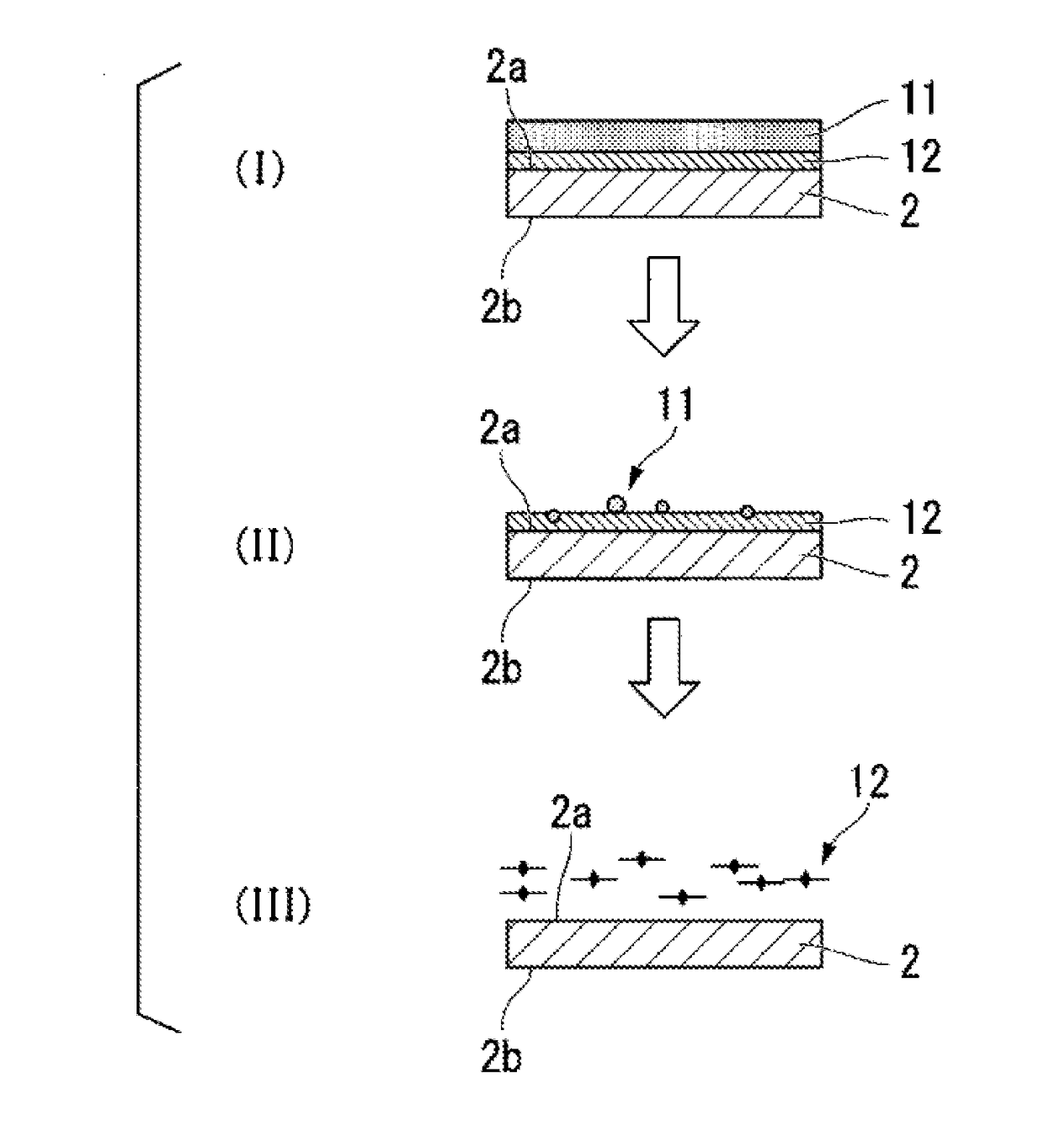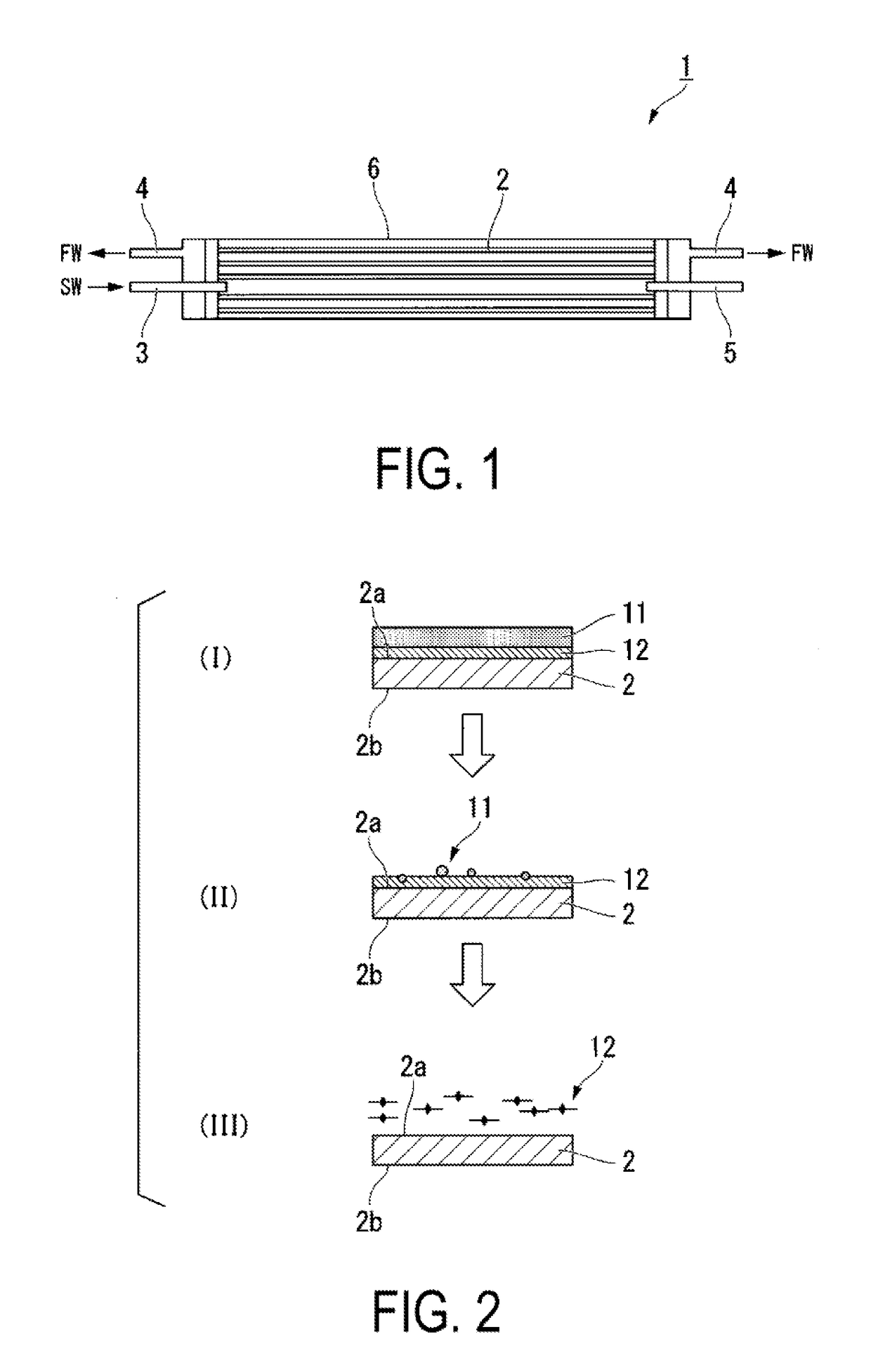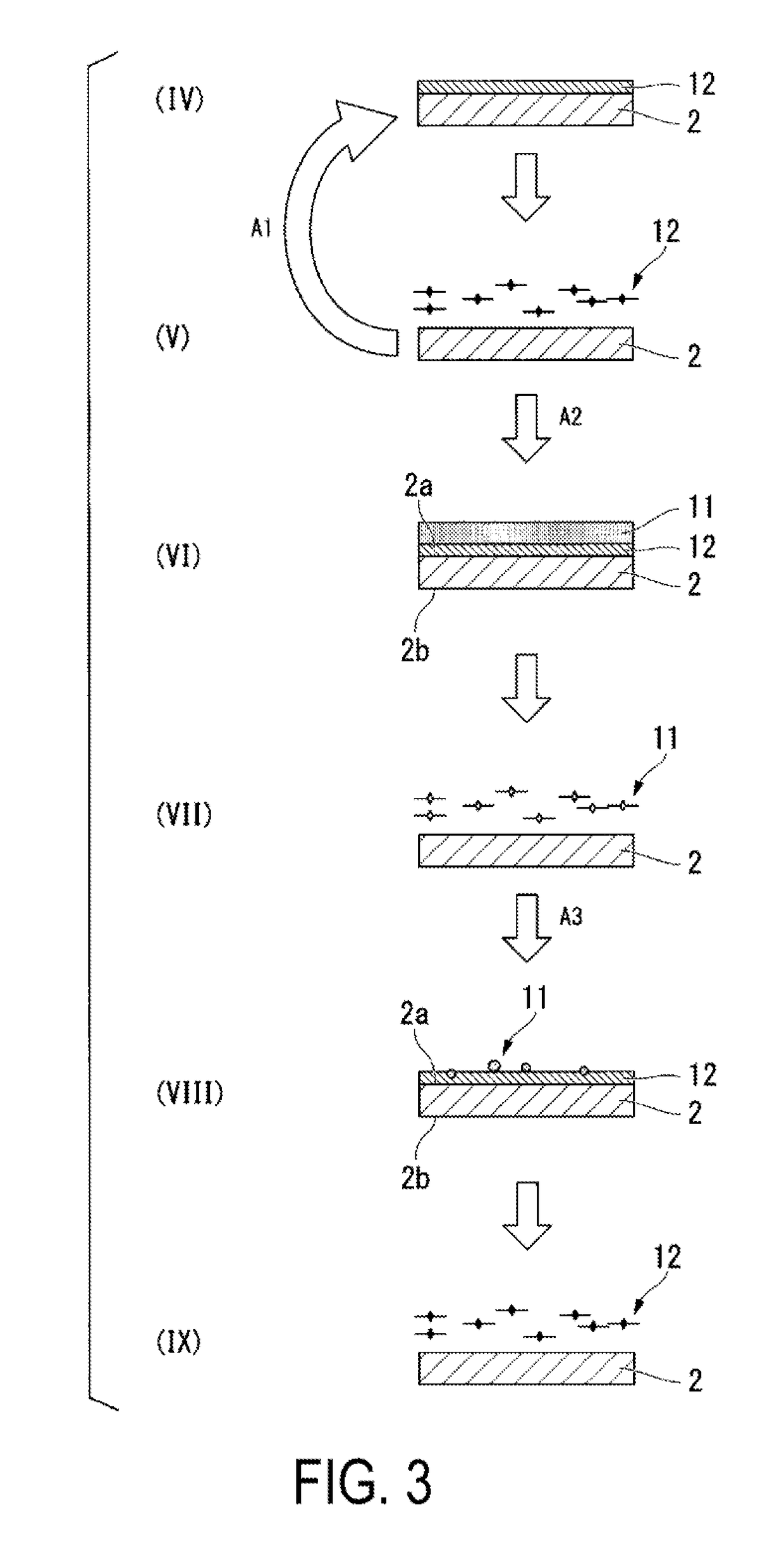Cleaning method for water treatment membrane
a water treatment membrane and cleaning method technology, applied in water/sewage treatment by oxidation, membranes, reverse osmosis, etc., can solve the problems of clogging of reverse osmotic membranes, decreases in permeability, etc., and achieve sufficient cleaning effect and suppress the effect of oxidative degradation of water treatment membranes
- Summary
- Abstract
- Description
- Claims
- Application Information
AI Technical Summary
Benefits of technology
Problems solved by technology
Method used
Image
Examples
first embodiment
[0045]In the cleaning method of a first embodiment for cleaning an RO membrane 2 provided with a primary surface 2a for inflow of untreated water and a secondary surface 2b for outflow of permeated water, a first cleaning step and a second cleaning step are performed in this order. There may be other steps between the first and second cleaning steps, and there may be other steps before the first cleaning, step or after the second cleaning step.
[0046]The first cleaning step is a step in which a first cleaning fluid containing a metal eluent is brought into contact with at least the primary surface 2a so as to eliminate the metal scale 11 attached to the RO membrane 2. The first cleaning fluid preferably also comes into contact with the inside and the secondary surface 2b of the RO membrane 2.
[0047]The second cleaning step is a step in which a second cleaning fluid containing an oxidizer is brought into contact with at least the primary surface 2a so as to eliminate the organic scale ...
second embodiment
[0087]Prior to the first step in the first embodiment described above a preliminary washing step may be performed wherein a third cleaning fluid containing an oxidizer with a lower concentration than that of the second cleaning fluid is brought into contact with at least the primary surface 2a of the RO membrane 2 so as to eliminate the organic scale 12 attached to the RO membrane 2.
[0088]The detergency of the third cleaning fluid is weaker than that of the second cleaning fluid, so the organic scale 12 is not completely eliminated. However, since the oxidizer concentration is comparatively low, a rinsing step is unnecessary prior to transitioning to the normal operation for desalinating seawater. Thus, the amount of time that the normal operation is stopped to perform the preliminary cleaning step is short, and the process from the beginning to the end of the preliminary cleaning, step is completed in 0.1 to 2 hours, for example.
[0089]The type of the oxidizer contained in the third...
example 1
[0101]The RO membrane module 1 illustrated in FIG. 1, which was provided in a test plant for desalinating seawater, was cleaned as follows.
[0102]First, after seawater was discharged from the brine outlet line 5, a first cleaning fluid containing citric acid with a concentration of from 0.5 to 20 wt. % as a cleaning agent (metal eluent) was fed from the feeder line 3 with a flow in the same forward direction as the filtration direction, and the space on the primary surface 2a side of the RO membrane 2 inside the vessel 6 was filled. At this time, a fresh first cleaning fluid was allowed to pass through the inlet part of the vessel 5, where there was a large amount of scale attachment. After it was confirmed that the vessel 6 was full, immersion cleaning, was performed for less than 24 hours or from 1 to 6 hours (first cleaning step). After immersion cleaning, the first cleaning fluid was discharged to the outside of the vessel.
[0103]Next, reverse cleaning was performed, wherein a sec...
PUM
 Login to View More
Login to View More Abstract
Description
Claims
Application Information
 Login to View More
Login to View More - R&D
- Intellectual Property
- Life Sciences
- Materials
- Tech Scout
- Unparalleled Data Quality
- Higher Quality Content
- 60% Fewer Hallucinations
Browse by: Latest US Patents, China's latest patents, Technical Efficacy Thesaurus, Application Domain, Technology Topic, Popular Technical Reports.
© 2025 PatSnap. All rights reserved.Legal|Privacy policy|Modern Slavery Act Transparency Statement|Sitemap|About US| Contact US: help@patsnap.com



